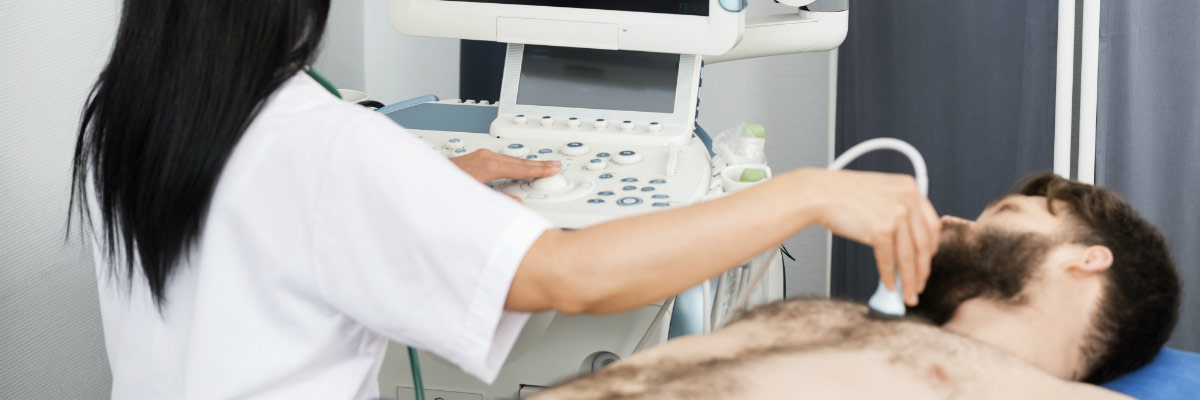Echocardiogram
An echocardiogram, often referred to as an echo, provides an outline of the hearts movement and performance. It uses sound waves (much like an ultrasound) to create a moving picture of the heart. The picture is much more detailed than an x-ray image and involves no radiation exposure. The images help determine the size of the heart, strength of the heart muscles, presence of heart diseases and heart valve malfunctions. The images of the heart are shown on the large screen monitor that allows the doctor and the patient to view during examination. Echocardiograms are routinely used in the diagnosis, management and follow-up of patients with any suspected or known heart diseases.
Why an Echocardiogram is Performed
Your doctor may suggest or require an echo for multiple reasons including but not limited to:
- Check for problems with the valves or chambers of your heart
- Check if heart problems are the cause of other symptoms (short of breath, chest pain etc.)
- Detect heart defects before birth
- Check on your hearts strength
- Measure different parts of your heart
What Are The Risks?
The good thing about an echo is that the risks are slim to none. Since there is no radiation use in the test and it is all external, the test is extremely safe and can be performed on nearly anyone that needs one.
What Happens After the Test?
After the test, your results will be sent to your doctor for examination. They will determine the outcome of the test and be in contact with you if any issues arise. If you have any questions, please contact our staff.

